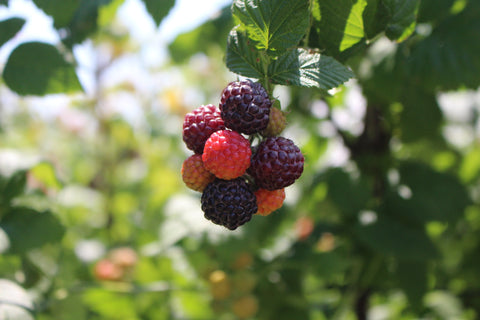Droplets of Joy for Your Garden: Water
Plants need adequate moisture to thrive. Generally, Nourse Farms plants require 1–2 inches of rainfall or equivalent irrigation per week. Sometimes, Mother Nature may provide the perfect amount of rainfall for your garden during a specific period. Yet, every summer in nearly every location, there is a period of dry, hot days that require additional watering.
Plants absorb nutrients through their roots and use a water solution to transport these nutrients throughout the plant. Without adequate water, the plant is unable to draw sufficient nutrients.
How often should you water?
Don't guess, check! The best practice is to check your soil regularly to determine if it's time to water. Water when the soil is dry two inches below the surface. The amount and frequency of watering depend on several factors, including soil type and weather conditions. Mulched soils retain water better and may lessen the frequency of watering.
Understanding your soil's type and how it holds water helps determine how often irrigation is necessary. Sandy, well-draining soil requires more frequent watering than heavier, clay soils or loamy soils that are rich in organic matter. Not sure what your soil type is? Contact your local extension office for help! Click here to find your state’s Cooperative Extension.
Shallowly rooted plants (such as raspberries) dry out more quickly and wilt faster than tap-rooted plants. Young plantings that are establishing their root systems require more water than established plants with large roots.
Best Watering Practices
When watering, apply water directly to the base of the plant to help reduce disease pressure and spread. Wet leaves, especially in the evening, can lead to leaf diseases. We recommend a drip irrigation system for the most control over your watering. If using a hand-held hose, lessen the water outflow pressure to allow water to soak slowly into the soil.
Watering early in the day is best practice; however, if plants are showing signs of heat stress, don't wait! Water heat-stressed plants as soon as possible.
Signs of Heat Stress on Plants
- Wilting
- Sunscald
- Blossom end rot
- Blossom and fruit drop
- Dry leaf edges
- Leaf rolling and cupping



